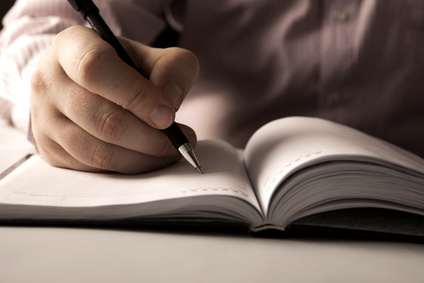Many of us start out with the best of intentions when it comes to turning our family tree research into a family history book. But then something happens. Our book project is completely thrown off course, and we can’t seem to get back on track and bring it across the finish line.
You are not alone when it comes to struggling to complete your family history book. There is any number of detours, delays, and disasters that can keep you from finishing.
Let’s look at a few of the more popular problems that can happen to your project and how to fix them and get you back on track.
Disaster – I can’t afford to print my book
I’ve written my book, but it is too big. I mean really big and I can’t afford to print it. This is a disaster first because the entire goal of writing a family history book is to be able to share it. If you can afford to print it, or your family can’t afford to purchase a copy what is the point. What was all that work for?
THE FIX – Take on manageable size projects
Break your family history into sections, one book per surname or couple. You can even create a book on a single ancestor if you have a lot of research for them. Don’t think that your family history must be one giant book. There are so many more viable options that will not only interest your family but make the book more affordable. If your book is already written, consider natural breaks in your book. Turn the book into a series and print it in volumes reducing the cost to your family.
Delay – Life keeps getting in the way of creating my family history book.
I really want to create my book, but life keeps getting in the way. I just can’t seem to find the time.
THE FIX– Comprise a detailed plan
You need a detailed plan with manageable tasks and deadlines that takes you from start to finish. You also need to carve out time each week to work on your family history book. If you don’t make it a priority in your life no one else will. The only way to do that is to schedule it into your weekly calendar and make that time non-negotiable. When you have a plan, you have a focus, and it becomes much easier to stay on track.
Delay – My research isn’t complete.
I want to get a little bit more research done before I start writing my book.
The FIX – Adopt a new mindset
Stop it. The research will never be done. Create a book with what you have. If you keep waiting to find that next piece of research to include in the book, you’ll never get around to making your book. You need to adopt a new mindset. Create a book with what you have – One ancestor, one story at a time. Learn the process of building a book on something small and manageable. Then later you can take on that bigger book. Also, many on-demand printers allow you to make changes to your book at any time. You can always go back a few years from now and make any changes you want, provide updates and second editions.
Detour – I can’t figure out how to organize my book.
My book is chaos, it has no organization, and I don’t know how to fix it.
The FIX – Outline the scope and span for your book
Taking some time upfront to identify the scope and span of your book before you start will go a long way in keeping chaos at a distance. Identify very clear parameters for your book, including the ancestors that will be in it, what years you will cover? How many pages, how many stories? Without these clearly defined parameters, you’ll quickly get off track, and the whole project can become a runaway train that is hard to bring back under control. Mindmap out your contents. Divide your book into parts, sections, chapters, and stories. When you compartmentalize the book, it becomes easier to organize. Don’t try to write your family history as one long story from beginning to end. Family histories are comprised of many individuals each with their own story. Don’t try to make them all fit together in one story.
Delay – I don’t have the tech skills to make a book.
Many family historians are intimidated by the software available to create beautiful coffee table style descendant’s books.
THE FIX– Anything can be learned or hired out.
Build some time into your schedule to learn. If the tech element of producing a book is not your strength, then create a team. Find family members with these skills who are willing to help you. There are also lots of online courses and videos to help you learn book building software. Most of this software has simple drag and drop features. Explore what is out there. It’s easier than you think.
Disaster -My stories are boring
My stories are boring, and I want them to be better before I print my book. What good is a book that won’t be read?
THE FIX- Learn to turn your facts into entertaining stories.
By learning to write narrative nonfiction, you can turn the true-life stories of your ancestors into entertaining and engaging stories. Narrative nonfiction uses details, description, plot, tension, and dialogue to bring family history stories to life on the page. Take a class and learn to turn facts into real stories.
Do you have a delay, detour, or disaster that is preventing you from creating your family history book?
[wufoo username=”lynnpal” formhash=”z1fu00w717iarsp” autoresize=”true” height=”813″ header=”show” ssl=”true”]


